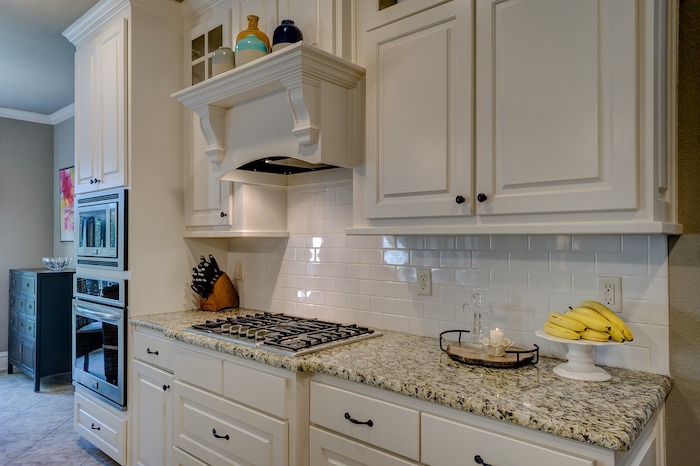THE BATTLE OF THE HOME ENERGY SOURCES: GAS VS. ELECTRIC

Article Found on BuilderOnline, written by Lydia Lee
Troon Pacific, a San Francisco–based developer of high-end residences, just put its latest project on the market: a $45 million, 9,500-square-foot house in the city’s Russian Hill neighborhood. The kitchen of this LEED Platinum-certified home has not one, but two cooktops: a 36-inch Gaggenau gas cooktop and a 15-inch Gaggenau electric induction cooktop. “Induction is the most sought after by chefs, because the heat can be so well controlled,” says Greg Malin, CEO of Troon Pacific. “But the market in the U.S. hasn’t quite broken out yet, so we have both, to let people choose how they want to cook and expand in the directions they want to.”
In homes designed for those on modest budgets, the choice of electric or gas cooktops, heating systems, hot water heaters, and other appliances is typically driven by cost, availability, and reliability, but efficiency, sustainability, and customer preference are other considerations.
While production builders usually rely on subcontractors or local market conditions to determine the best choice of fuel for their new homes, consumer demand is changing and more buyers are voicing a preference. This makes it important for builders and their salespeople to stay on top of the new technologies and developments in both gas- and electric-fueled appliances and HVAC systems. (Click here for a sampling of these new developments.)
The Big Picture
On a practical, functional level, there are pros and cons to each energy source. From a cost standpoint, the price of natural gas is generally lower than electricity. According to the U.S. Energy Information Administration’s “Annual Energy Outlook 2019,” natural gas prices will be low through 2050, and power plants will continue take advantage of these historically low prices to switch from coal to natural gas for generating electricity. However, there are regional differences; the Pacific Northwest’s plentiful hydroelectric power results in some of the lowest costs for electricity in the U.S. And natural gas is often not available in rural parts of the country.
While installing natural gas lines in a home involves additional cost and overhead, they are also seen as an amenity that adds value to a home. According to UPL, an Ohionatural gas utility company, area homes equipped with natural gas see a 5% to 10% increase in their resale value compared with similar homes sans gas. It’s important to note that gas appliances such as furnaces and water heaters need to be properly vented to the exterior to exhaust the resulting carbon monoxide, an odorless but deadly gas. (To guard against carbon monoxide poisoning, 38 states in the U.S. require carbon monoxide detectors to be installed in homes.)
From an environmental standpoint, natural gas has its pluses and minuses. On the one hand, it is considered the “cleanest” of all the fossil fuels. However, it does still produce substantial carbon emissions as well as nitrogen oxides (NOx), a pollutant that forms smog. In addition, natural gas is composed primarily of methane, a potent greenhouse gas, and extracting and transporting it results in a small but still significant amount of leakage. Approximately two-thirds of the natural gas in the U.S. is extracted by fracking, a controversial technique that involves pumping water at high pressure into rock fissures.
In addition to heating homes and powering stoves directly, natural gas is used by power plants to generate about one-third of our electricity. A 2015 report by the Union of Concerned Scientists warns that switching from coal to natural gas for producing electricity will slow the development of renewable energy and recommends that the U.S. pursue “a diverse supply of low-carbon power sources—made up primarily of renewable energy and energy efficiency with a balanced role for natural gas.”
Meanwhile, electricity ultimately is the more environmentally friendly choice since it has the potential to dramatically reduce carbon emissions and slow global warming by harnessing renewable resources such as solar, wind, and water power. Electric heat pumps and induction cooking outstrip their natural gas counterparts in terms of energy efficiency. In addition, electric appliances don’t produce toxic gases. However, the relative instability of the electrical grid is a cause for concern, particularly for homeowners in extreme climates prone to hurricanes, tornadoes, or other strong storms. In 2017, 36.7 million people in the U.S. were affected by power outages, more than twice the number affected the year before, according to global power-management company Eaton.
Fortunately, builders have many options to find the right balance in their projects, from high-efficiency gas furnaces to restaurant-quality induction cooktops. Below is a roundup of the most commonly used appliances and HVAC systems. [And click here for a sampling of gas and electric products new to the market.]
Furnaces and Heat Pumps
A home’s heating and cooling systems use the most energy within a home, and heating alone is responsible for about 40% of its total energy use. For heating, one of the most common systems is a gas-fired furnace in a forced-air system with ductwork. The latest gas furnaces are extremely fuel-efficient, able to convert upward of 98% of the fuel into heat. Higher-end furnaces have variable-speed fans that ramp up gradually for quieter operation and change speed as needed to maintain a constant temperature, increasing their efficiency. To reduce smog, some California counties now require that gas furnaces (along with gas water heaters) meet strict standards for NOx emissions. Furnace manufacturers including Carrier, Lennox, and Rheem have responded with compliant products, which may also be of interest to builders nationwide.
Electric furnaces, which send a current through coils to generate heat—also known as electric resistance heating—are a comparatively inefficient and expensive way to create heat. Electric heat pumps, on the other hand, are much more efficient at heating than both electric resistance and gas alike, but the advanced technology also has a higher up-front cost and is likely to still be more expensive to operate than gas. According to the 2018 Home Innovation Research Labs’ Annual Builder Practices Survey of 1,500 home builders representing 40,000 homes, 36% of new homes are heated with a heat pump.
An air-source heat pump works to transfer heat from the exterior to the interior of a home for heating and can switch for cooling, like a refrigerator that reverses on demand. While gas furnaces have improved to the point where they are nearly 100% efficient, a heat pump is 130% efficient (even after taking into account the energy loss from source to site) because it extracts extra energy from the ambient air. “The thermodynamic elegance of the modern heat pump is hard to beat,” says Kristof Irwin, a principal at Positive Energy, an Austin, Texas–based mechanical engineering firm.
Heat pumps are attractive solutions for more moderate climates that also require cooling, since installing a single heat pump is more economical and easier to maintain than separate heating and air conditioning systems. For colder climates where temperatures drop below about 20 degrees, dual-fuel heat pumps provide the benefit of an auxiliary gas-powered system. Carrier’s Infinity series of heat pumps boast the highest heating efficiency in the industry at 13 HSPF and can be coupled with a gas furnace. Another variation that is particularly suited to extremely cold climates is the geothermal (ground-source) heat pump, which uses the temperature differential of the earth for heating and cooling. With the impeccable green credentials and the ability to dramatically lower energy bills (ClimateMaster offers a calculator) come considerably higher installation costs—starting at about $20,000—although there is a 30% federal tax credit to help offset the cost.
Heat pumps are generally used in a traditional forced-air system with ductwork, but ductless mini-split systems, in which the refrigerant is pumped through thin tubes to air handlers in each space, are another option. A ductless system avoids the energy losses that are inherent with ductwork and also provides the efficiencies of zoned heat and cooling. Even more sophisticated versions of this technology, variable refrigerant flow (VRF) systems, are starting to be used in the residential market. As the name suggests, each air handler gets a variable amount of refrigerant depending on its needs, and the system is advanced enough to cool one room while simultaneously heating another. Pioneered in Asia in the 1980s and just starting to break into the mainstream in the U.S., the technology is available from many manufacturers, including Mitsubishi, Daikin, and Fujitsu.
In-Floor Heating
Radiant floor heating, which is considered to be the most comfortable form of heating, has implications for its power source. Small spaces, like a bathroom, can be heated through an underfloor mat of electric wires; for a whole house, heated water is pumped through tubes in the floor. A hydronic system is almost always more expensive than a traditional forced-air system, but is also clearly perceived as an asset by homeowners. According to an April 2018 report from Zillow, homes that had heated floors or radiant heating in their descriptions sold for 24% above expected values. In Troon Pacific’s luxury homes, radiant heating is a given; the $45 million house’s floors are heated by an 80-gallon gas-fired boiler, which also supplies the home’s hot water.
A gas boiler is the most common way to heat a hydronic system, but a more sustainable way would be to use a geothermal heat pump or air-to-water heat pump. “An air-to-water heat pump is a perfect match for a hydronic system, since it delivers water at the lower temperatures that you need for space heating,” says Dan Foley, president of Washington, D.C.–based Foley Mechanical and a board member of ACCA (Air Conditioning Contractors of America). The company has installed approximately 50 air-to-water heat pumps for both radiant floor heating and ducted forced-air systems over the past several years.
Fireplaces
Fireplaces are popular for adding ambience as well as supplemental heat. Direct-vent gas inserts, which are sealed off from the room and have a venting system that draws and exhausts air directly to the exterior, are more efficient for heating than open-hearth gas fireplaces. Bio ethanol–burning fireplaces, which don’t need to be vented, produce flames without a lot of heat. Linear electric fireplaces from companies such as Modern Flames fit in well with contemporary architecture and offer realistic-looking flames with or without heat.
Hot Water
Water heating is the second largest energy user in the home, making up about 18% of the total. The traditional option is a gas-powered hot water heater with a 40- or 50-gallon storage tank.
However, tankless water heaters are now installed in about one-third of new homes, according to the 2018 Home Innovation Annual Builder Practices Survey. Since they heat hot water on demand, they can be up to 50% more efficient than a tanked system. At about one-tenth of the size of a tank, tankless also frees up a considerable amount of space. “Our clients install them primarily for space-saving reasons,” says Tina Esquivel, project manager at Wizard Plumbing, based in the San Francisco Bay Area. However, both the equipment and installation are considerably more expensive than their tanked cousins. They are available in both gas- and electric-powered versions, but the gas versions have a higher flow rate, making them more desirable for larger households.
Electric options consist of electric-resistance water heaters and heat pumps. As is true for space heating, heat-pump water heaters, which use a storage tank, are more efficient but are considerably more expensive. In Consumer Reports’ test of tanked and tankless versions, both gas and electric, the heat-pump version got by far the highest scores. Sanden’s CO2 air-to-water heat pump, which uses carbon dioxide as an environmentally friendly refrigerant, is exceptionally efficient and can also be used for space heating. Another popular energy-conserving alternative, solar hot water can be cost-effective (Energy.gov provides the calculations), but it requires a backup system for cloudy days.
Cooktops
Although food preparation uses a fairly small amount of energy, it’s probably the most prominent gas-or-electric decision for home buyers, since cooking preferences are so personal. The kitchen, which has expanded in size over the years to become the central gathering place in the home, is a highly visible showcase for the latest appliances. It’s increasingly common to separate out the cooktop from the oven, rather than have an all-in-one range, since it allows the oven to be placed higher for better access and multiple people can cook together more easily. About 20% of new homes, according to the 2018 Home Innovation Annual Builder Practices Survey, have separate cooktops and one or more wall ovens.
Gas cooking is still the most popular choice for consumers—it’s used in the kitchen by 55% of American households—especially those who like to cook a lot. But in terms of speed of cooking and energy efficiency, induction cooking is the clear winner; one comparison showed it was 74% efficient, while gas was 32% efficient. Induction technology, in which an electromagnetic field heats the cookware directly, brings food up to the right temperature that much faster and provides precise control over temperature. It doesn’t generate the pollutants that natural gas does, or the ambient heat that results from open-flame cooking. Another part of its appeal is safety: The instant a pot is removed from the heating element, the surface is cool to the touch. The rise of sous vide cooking, which requires very low heat for long periods of time, has also spurred more interest in induction.
“Most people who like cooking with gas haven’t tried induction and are comparing it to the old-style electric coil or smooth-top radiant,” says Jeff Stern, managing partner for CG Appliances in the San Francisco Bay Area. Among the latest induction cooktops is the ThermadorFreedom; it offers the largest available continuous cooking surface, which can be used to heat either one enormous pan or up to six pots or pans.
Wall Ovens
Electric wall ovens are much more prevalent than gas models and are purported to bake more evenly. Among the latest trends are French-door wall ovens, with two doors that hinge open on either side, rather than a single door (although you can still open them with one hand). Electric steam ovens, which cook food with steam to retain more nutrients, have become “the latest ask in kitchens,” says Stern. The Miele combi-steam oven adds browning and crisping capabilities to steam cooking and also functions as a regular convection oven.
Get in touch with the experts at DAMAR Heating and we can help you make the most informed decision about which route to take with your gas or electric heating systems and appliances. Call us at (503)236-6344 today.

